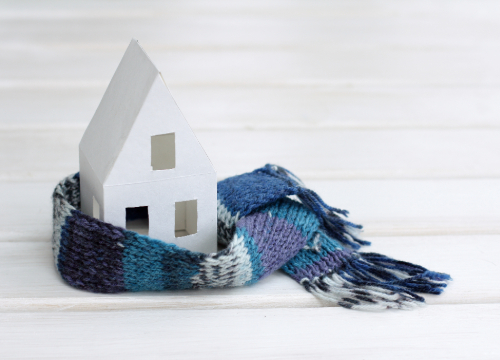Moving house is fun! Not. We all know it can be a stressful and logistical nightmare, even with that pot of gold at the end of the rainbow (new house!). But with careful planning, it’ll be a walk in the park. Well almost…
1. De-clutter like you mean it
We’re all hoarders to one degree or another, so now’s a great time to chuck the stuff that hasn’t seen daylight in months or years. Getting rid of the unwanted will save you time packing and unpacking. What’s the point paying to ship stuff you’ll dump at the other end? “It might come in handy one day” doesn’t cut it when you’re moving.
Measure up at the new place, so you know furniture will fit. If anything is surplus to requirements, sell it online or donate it to a worthy cause. Giving things away is easy with sites like Freecycle. Start early with the disposal process, because days seem to evaporate when you have a move coming up.
2. Book a removal company
Get in early to make sure your selected movers can do the job. The good removal companies tend to be heavily booked. Before you make a choice, get at least three quotes in writing and make sure you understand what you’re getting from each mover.
Check with your insurance provider to make sure you’re covered during the shift. And don't forget to ask your moving company what insurance they have in place too in case things go wrong during the move.
3. Get your packing kit together
Start collecting cardboard boxes. You’ll need a lot more than you think. Friendly retailers and supermarkets are usually happy to donate empty boxes to your moving mission, because it saves on their disposal costs.
Get different sized boxes - large ones for bulky light stuff, like bedding; smaller ones for heavier items, like books and crockery. Earmark the sturdiest boxes for your breakables.
Use bubble wrap for the most delicate items - most hardware stores sell rolls of it or you can re-use bubble wrap from friends who hoard the stuff. Your local dairy might also have out-of-date newspapers for packing. Also get a roll of hi-viz ‘fragile’ stickers - the movers will appreciate knowing which boxes to take extra care with.
4. Pack with precision
Before you start packing, check which items the movers won’t take. If they won’t move hazardous items, like LPG cylinders, you’ll need to move them yourself (go online to find out how to do this safely).
- Start packing early and pack up rooms you don’t use a lot. The garage, the garden shed and the spare room are good places to start. If it’s summer, pack your winter clothing, cookbooks, winter sports gear and golf clubs. There won’t be time to even contemplate 18 holes with your mates!
- It’s best to pack room-by-room, leaving out items you’ll need to use right up until moving day. Pack a survival box. You’ll need quick and easy access to bedding, medication, liquid refreshments, snacks and loo paper.
- Box everything. You might think those awkwardly shaped items don’t need to be boxed, but things that aren’t boxed are likely to end up on your casualty list.
- Before packing up the TV and computer, photograph the cable connections to make it easy to reconnect. Use original packaging if you’ve still got it. If not, pack electronics in an oversized box and use pillows, towels or bedding to cushion any knocks during the journey. Pack electronic items individually and mark them as fragile. Back up any important files before packing computers.
- To save time, use coloured stickers to show which room to put boxes in. Don’t just write ‘Master Bedroom’ on the box; detail the contents and make life easy for yourself when searching for your work shoes or bedside lamps.
- To simplify moving your clothes, leave them in drawers and just tape the drawers shut. You’ll save on cartons and it’ll be easy to find something clean to wear.
- Don’t leave empty space in boxes. If they’re only partly filled, they crush more easily and items can be damaged. Crushed cartons are also unstable - you could be welcomed at your new abode with a face full of tumbling cartons!
- It’s best not to overload cartons. If the carton is getting too heavy, add some lighter items and save your back. Fill suitcases, sports bags and the laundry basket to save space.
- Tape an X on glass cabinet doors and mirrors and cover the surfaces with cardboard. Keep mirrors and glass upright and use corner protectors to guard edges from damage.
- Dismantle furniture to save on space. Remove table legs, bed legs and dismantle shelving. Remove lounge suite squabs and pillows and wrap them separately in sheets. Tape up fridge and microwave doors – and don’t forget to defrost fridges and freezers the day before moving.
- Last but not least, you’re probably going to need a cold one at the end of the move, so buy ice for the chilly bin!
5. Draw up the ultimate ‘to-do’ list
Put together a to-do list to make sure you action all the changes and arrangements involved in a move.
- Talk to your electricity supplier and log a disconnection and connection date. Request a final account for the place you’re leaving. Do the same for your phone. And last but not least, take the final water reading.
- If you’ve been renting, organise a final inspection date that suits your timetable and give your landlord bank account details to reimburse your bond.
- If you’re moving to a new area, it’s useful to do some research. Join some local community groups on Facebook to find out who’s a reliable electrician, plumber, doctor and dentist. Also locate the nearest hardware store, recycling station and supermarket.
- Contact New Zealand Post and organise for your mail to be redirected to your new address. They’ll give you options to redirect your mail for 2, 4, 6 or 12 months at a price.
- Go through your suppliers and prepare a list of contact numbers or websites to make it easy to change your address a few days before the move.
- If you’ve got a lot of stuff to move, consider renting off-site storage. Typically this will cost you around $200 to $300 per month to store around 80 cartons. Prices vary depending on your area. Off-site storage takes the stress out of moving by giving you extra time to unpack and organise your new home. If you have to rent between owning homes, this is a great way to store items that you don’t need or won’t fit in your temporary home.
- If your new place needs some minor improvements, organise as much as you can ahead of time. It’s always easier to freshen up paintwork, replace floor coverings and update window treatments before the move.
- When the big day arrives make sure you have your survival box in your vehicle, along with your valuables, artwork and important paperwork.
6. Update your insurance
Last but not least, update your insurance with your new address. If you've downsized or upsized your contents, run through our easy to use contents calculator to make sure you have the right sum insured
You might also like...
-
 December 2024Lifestyle Blog | State Insurance
December 2024Lifestyle Blog | State InsuranceSurviving the holidays
-
 September 2024Lifestyle Blog | State Insurance
September 2024Lifestyle Blog | State InsuranceSpring prep your home and garden.
-
 June 2024Lifestyle Blog | State Insurance
June 2024Lifestyle Blog | State InsurancePreparing your home for winter
